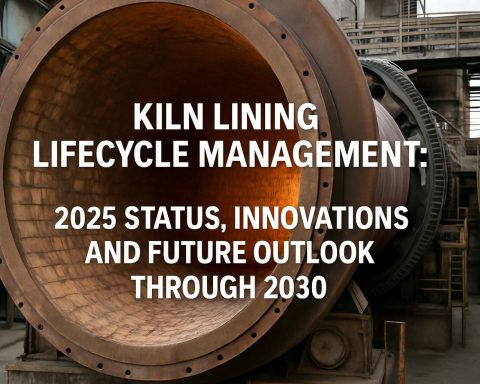- Tesla plans to mass-produce the Semi truck by late 2025, targeting 50,000 units annually from Reno, Nevada.
- The fleet has already covered 7.9 million miles, showcasing its reliability and trust from major companies like PepsiCo.
- The new 25-kilowatt electric Power Take-Off system allows the Tesla Semi to power auxiliary systems, essential for transporting perishable goods.
- Tesla’s Megacharger infrastructure is expanding, with plans to establish 46 public sites for efficient truck recharging across America.
- Tesla’s Semi and infrastructure advancements exemplify its pioneering role in the autonomous, sustainable future of logistics.
Electric highways filled with the sleek hum of Tesla Semi trucks are closer than ever. As Tesla thunders forward in its race toward sustainable transportation, its futuristic Semi truck has captivated the industry with recent revelations at the ACT Expo in Los Angeles. A planned crescendo in their deployment strategy, the Semi is poised for mass production by late 2025, aiming for an ambitious target of 50,000 units annually from their Reno, Nevada, hub.
The visionary might of Tesla is not just in creating electric vehicles—a feat unto itself—but in engineering a transportation ecosystem. Their accumulated fleet data sheds light on a promising future: 7.9 million miles behind them, a testament to both innovation and endurance. Each mile clocked symbolizes the trust leading companies like PepsiCo and Frito-Lay invest in this high-mileage marvel, with drivers reporting unfaltering performance on grueling 1,000-mile days.
But the heart of the Tesla Semi story is not merely in numbers; it resides in capabilities. Unveiled in a bold move to redefine trucking standards, the newly introduced 25-kilowatt electric Power Take-Off system enters the stage. This revolutionary feature transforms the Semi into more than a truck—it becomes a powerhouse. It is designed to channel energy to auxiliary systems like refrigeration units and hydraulics, a significant advantage for companies transporting perishable goods. This means Semi owners can ensure their cargo remains in pristine condition over long hauls without relying on traditional diesel generators.
In the electric odyssey, infrastructure is king, and Tesla is carving out its dominion with the Megacharger, a behemoth of recharging prowess. Plans are afoot to dot 46 public sites across the landscape with these high-capacity chargers, ensuring that Tesla trucks keep rolling efficiently across America. They are already springing up in strategic points, such as Frito-Lay’s expansion project in Bakersfield, California, making sure that the ever-growing fleet remains on the move.
As the road unravels ahead, Tesla continues its odyssey as a titan of technological progression. Each announcement not only accelerates the company’s momentum but also paints a broader picture of what’s possible when innovation meets the open road. The takeaway? As Tesla bridges gaps between aspirations and reality, the autonomous, sustainable future of logistics teeters just beyond the horizon, ready to reshape the very fabric of commerce and commuting.
The Future of Electric Trucking: How Tesla’s Semi is Transforming the Logistics Landscape
Tesla Semi: The Dawn of a New Era in Sustainable Trucking
Tesla’s Semi truck is not just a new player in the electric vehicle (EV) market; it represents a paradigm shift in how we approach long-haul trucking and sustainable transportation. With plans to achieve mass production by late 2025 and an annual target of 50,000 units from their Reno, Nevada, manufacturing center, Tesla is making a bold statement about the future of logistics.
Key Features and Innovations
1. 25-Kilowatt Electric Power Take-Off System: A groundbreaking feature, this system allows the Semi to supply power to auxiliary systems such as refrigeration units, providing a critical advantage for transporting perishable goods without reliance on diesel generators.
2. Megacharger Network: As part of its infrastructure strategy, Tesla is rolling out high-capacity Megachargers at 46 planned public sites. These stations will ensure that Tesla Semis can recharge quickly and efficiently, enabling seamless long-distance travel.
Real-World Use Cases
Many leading companies, including PepsiCo and Frito-Lay, are already utilizing the Tesla Semi, which has collectively logged over 7.9 million miles. The results showcase the robustness and reliability of the Semi, with drivers managing demanding 1,000-mile trips daily.
Pros & Cons Overview
– Pros:
– Eco-friendly with zero emissions
– Reduced operating costs due to lower fuel and maintenance expenses
– Enhanced driver comfort and safety features
– Cons:
– High initial purchase cost
– Limited charging infrastructure compared to traditional diesel fueling stations
– Potential challenges in extreme weather conditions
Expert Opinions and Industry Trends
Market Trends: The push towards sustainable transport is growing, with electric trucks expected to gain a larger market share over the coming decade. The global electric truck market is projected to reach over USD 15 billion by 2027, with increasing adoption and demand for environmentally friendly logistics solutions.
Expert Insights: According to industry analysts, Tesla’s innovative approach and focus on building an integrated transportation ecosystem give it a competitive edge. The Semi’s performance and features are gradually convincing traditionally conservative logistics companies to pivot towards electrification.
Tips for Businesses Considering the Transition
– Assess Infrastructure Needs: Ensure your routes and logistics hubs are near planned Megacharger locations or have adequate charging solutions.
– Evaluate TCO: Consider the total cost of ownership, including potential tax incentives for EVs, reduced fuel, and maintenance costs.
– Plan for Scalability: As more electric truck models enter the market, plan for future scalability in your fleet strategy to stay competitive.
Conclusion: Embracing the Future of Logistics
Tesla’s Semi is more than a new electric truck; it’s a herald of change in the logistics sector. Companies ready to adopt this technology may find themselves at a competitive advantage, benefiting from lower costs and a boost in sustainability credence.
For more insights on Tesla and its advancements, visit the Tesla website. Stay informed to drive your business forward into the sustainable future.








